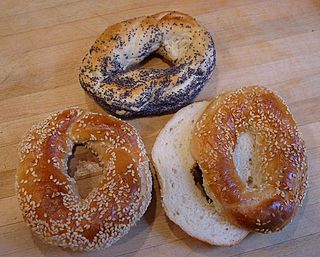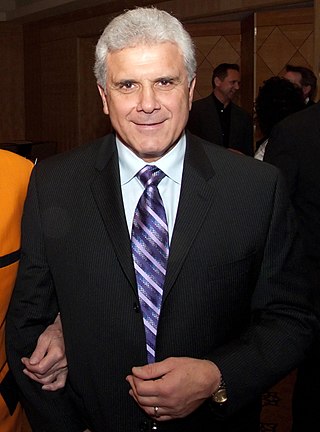Related Research Articles

The loonie, formally the Canadian one-dollar coin, is a gold-coloured Canadian coin that was introduced in 1987 and is produced by the Royal Canadian Mint at its facility in Winnipeg. The most prevalent versions of the coin show a common loon, a bird found throughout Canada, on the reverse and Queen Elizabeth II, the nation's head of state at the time of the coin's issue, on the obverse. Various commemorative and specimen-set editions of the coin with special designs replacing the loon on the reverse have been minted over the years. Beginning in December 2023, a new version featuring King Charles III entered circulation, to replace the version featuring Elizabeth II.
In economics, a local currency is a currency that can be spent in a particular geographical locality at participating organisations. A regional currency is a form of local currency encompassing a larger geographical area, while a community currency might be local or be used for exchange within an online community. A local currency acts as a complementary currency to a national currency, rather than replacing it, and aims to encourage spending within a local community, especially with locally owned businesses. Such currencies may not be backed by a national government nor be legal tender. About 300 complementary currencies, including local currencies, are listed in the Complementary Currency Resource Center worldwide database.

The Canadian dollar is the currency of Canada. It is abbreviated with the dollar sign $. There is no standard disambiguating form, but the abbreviations Can$, CA$ and C$ are frequently used for distinction from other dollar-denominated currencies. It is divided into 100 cents (¢).
Beaconsfield is a suburb on the Island of Montreal, Quebec, Canada, part of the Greater Montreal region locally referred to as the West Island. It is a residential community located on the north shore of Lac Saint-Louis, bordered on the west by Baie-D'Urfé, north by Kirkland and east by Pointe-Claire.

Baie-D'Urfé is an on-island suburb of Montreal, Quebec, Canada. It is part of the West Island area of the Island of Montreal.
Sun Media Corporation was the owner of several tabloid and broadsheet newspapers in Canada and the 49 percent owner of the now defunct Sun News Network. It was a subsidiary of Quebecor Media.

Cochrane is a town in the Calgary Metropolitan Region of Alberta, Canada. The town is located 18 km (11 mi) west of the Calgary city limits along Highway 1A. Cochrane is one of the fastest-growing communities in Canada, and with a population of 32,199 in 2021, it is one of the largest towns in Alberta. It is part of Calgary's census metropolitan area and a member community of the Calgary Metropolitan Region Board (CMRB). The town is surrounded by Rocky View County.

The Montreal-style bagel or Montreal bagel is a distinctive variety of handmade and wood-fired baked bagel. In contrast to the New York–style bagel, the Montreal bagel is smaller, thinner, sweeter and denser, with a larger hole, and is always baked in a wood-fired oven. It contains malt, egg, and no salt, and is boiled in honey-sweetened water before being baked.
Calgary Dollars is a local currency in Calgary, Alberta, Canada. While functioning as a limited form of currency within Calgary, it is not legal tender nor is it backed by a national government. Instead, the currency is intended as a tool for community economic development as well as a focus for community building and local resiliency.

Le Sud-Ouest is a borough (arrondissement) of the city of Montreal, Quebec, Canada.

Pasquale "Wally" Buono is a Canadian ex-football coach currently working as the vice president of football operations, alternate governor and the former head coach of the BC Lions of the Canadian Football League (CFL), and one of the most successful head coaches in league history. He has spent 22 years as head coach of the Calgary Stampeders and the Lions, which is tied for the most seasons coached all-time. On September 19, 2009, Buono became the CFL's all-time winningest coach when his Lions beat the Toronto Argonauts 23–17, giving him 232 regular-season victories, passing Don Matthews. He retired in 2011 with a CFL record 254 regular-season wins as head coach, to focus on duties as general manager for the Lions. In 2016, Buono came out of retirement to coach the Lions again through the 2018 season. In the final home game of the 2018 season, Buono was honored with the Bob Ackles Award as he was retiring from football with the most wins as a coach.

Several plans have been proposed for high-speed rail in Canada, the only G7 country that does not have any high-speed rail. In the press and popular discussion, there have been two routes frequently proposed as suitable for a high-speed rail corridor: Edmonton to Calgary via Red Deer and Windsor to Quebec City via London, Kitchener-Waterloo, Toronto, Ottawa and Montreal.
Montreal is the second largest city in Canada and the largest city in the province of Quebec, located along the Saint Lawrence River at its junction with the Ottawa River. The city is geographically constrained, with the majority on the Island of Montreal in the Hochelaga Archipelago, and has several prominent features, including the eponymous Mount Royal. The region experiences four distinct seasons and is classified as a humid continental climate, with very cold and snowy winters and warm and humid summers.
Montreal has a developed transport infrastructure network, which includes well-developed air, road, rail, and maritime links to the rest of Canada, as well as the United States and the rest of the world. Local public transport includes a metro system, buses, ferry services and cycling infrastructure.

Salt Spring Island or Saltspring Island is one of the Gulf Islands in the Strait of Georgia between mainland British Columbia, Canada, and Vancouver Island.
Pierre Perrault was a Canadian documentary film director with the National Film Board of Canada. Over his 40-year career, he directed 32 films and was one of Canada's most important filmmakers, although he is largely unknown outside of Québec.

Grands-Jardins National Park is a provincial park, located in the Unorganized Territory of Lac-Pikauba, in the Charlevoix Regional County Municipality, an administrative region of Capitale-Nationale, in Quebec, Canada.

Saint-Pierre-de-l'Île-d'Orléans is a municipality in the Capitale-Nationale region of Quebec, Canada, part of the L'Île-d'Orléans Regional County Municipality. It is situated on the west side of Orléans Island, and accessible by Quebec Route 368 and the Île d'Orléans Bridge which connects Saint-Pierre with the Beauport borough of Quebec City. Until 1997, it was known simply as Saint-Pierre.
References
- ↑ "Calgary dollars".
- ↑ "La Chouenne pour un Charlevoix Fort". www.charlevoixfort.ca (in French). Retrieved 2022-08-01.
- ↑ "Cochrane Dollar – Cochrane Dollar = Local Employment" . Retrieved 2022-08-01.
- ↑ "Community Way Dollar". Archived from the original on 2010-05-02. Retrieved 2010-06-10.
- ↑ "Monnaie locale complémentaire Québec".
- ↑ "Dollars Johannois". saintjeandedieu.ca. Retrieved 2022-08-01.
- ↑ "Kawartha Loon Exchange".
- ↑ "OUR Community Dollar".
- ↑ "Pioneer Bonus Bucks".
- ↑ "Salt Spring Island Dollars".
- ↑ "Salt Spring Island $$Dollars". Numismondo. Salt Spring Island Local Currency, 2001 to 2002 Issues
- ↑ "Tamworth Hours". Numismondo. Retrieved 2011-04-04.
- ↑ "Tamworth Hours". Archived from the original on 2007-10-12. Retrieved 2007-11-24.
- ↑ "Toronto Dollar Community Projects Inc".
- ↑ "Unity Dollars". Numismondo.
- ↑ Breton-Champigny, François (April 2018). "Une monnaie locale pour Montréal: se réapproprier l'économie". journaldemontreal.com (in French). Retrieved 27 October 2018.
- ↑ "FAQ L'Ilot Montreal" (in French).